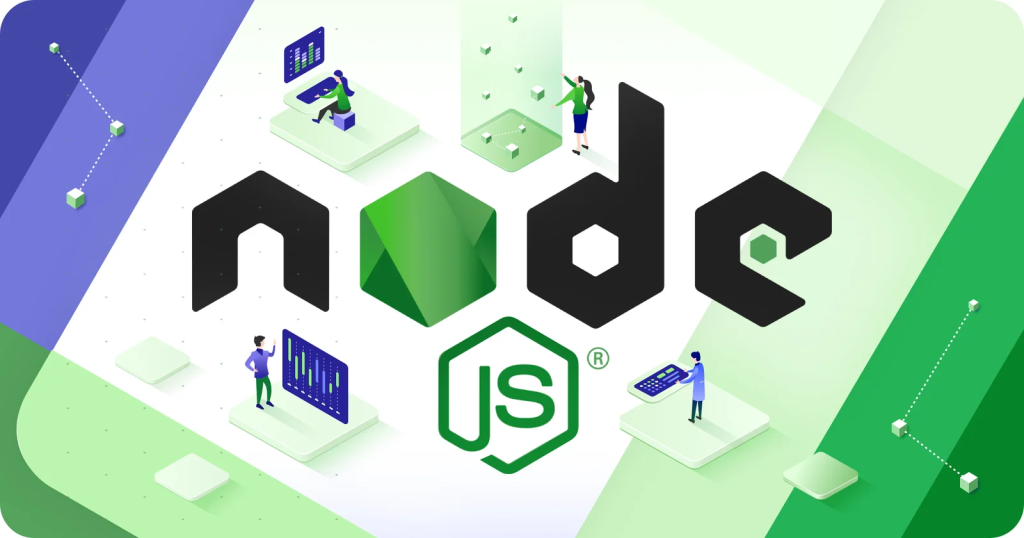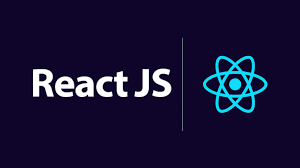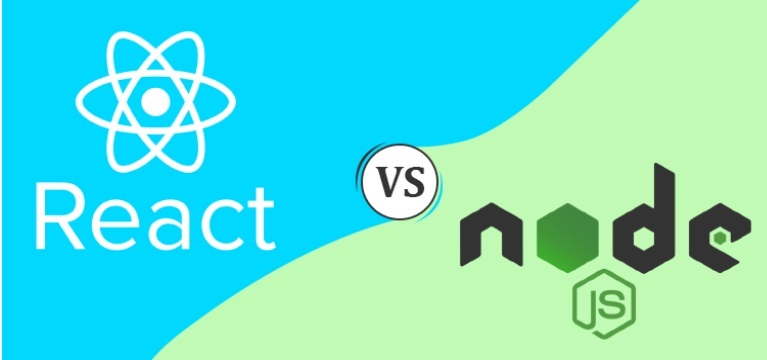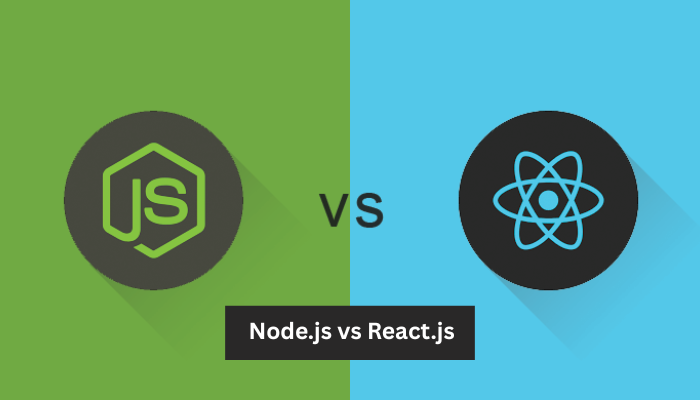Choosing the right tools is the first step to a fully successful web project. Node.js and React. Js. are two well-known choices for creating apps and websites. Both use Javascript and are widely used by developers. But they work in different ways and serve various purposes. In this guide, we will compare the two. We’ll see how they are different from each other and what each one does and when you should use them. This will help you pick the right tool for your next project.
Node.js Uncovered: The Engine Behind Web Apps

Node.js is used to build the backend of websites and web apps — the part that handles data, server, and logic. It’s not for designing pages, but it helps make everything work behind the scenes. It is part of the website that users don’t see. It runs Javascript code outside the browser – on the server. This means you can use JavaScript to handle tasks like storing data, sending emails, or connecting to other websites.
Most websites need a backend to manage data, process requests, or talk to a database. That’s where Node.js steps in. It does all this quickly and efficiently.
Node.js uses non-blocking or asynchronous code. This simply means it can handle many tasks at once without slowing down the work. That’s why it is great for apps that need speed like online gaming apps and chat apps. Node.js works behind the scenes to keep things fast and smooth.
Why Developers Love Node.js: Key Features You Should Know
1. It’s super fast: Node.js uses Google’s V8 Javascript engine, the same one used in Chrome. This engine runs code very quickly. So, when users click a button or send a message, the app responds fast.
2. Multitasking like a Pro: Node.Js uses a non-blocking code. That means it doesn’t wait for the task to finish before starting another. It can do many things at the same time — like handling thousands of users chatting or playing a game at once.
3. Uses Single Language: With Node.js, developers can use JavaScript on both the frontend and backend. This makes the development process easier because you don’t need to learn and switch to a new language for the server – side.
4. Tools for everything: Node.js has something called npm ( Node Package Manager ). It gives developers access to over a million free packages (tools, code, plugins ) that help them build apps faster and better.
5. Perfect for Real-Time Apps: Apps like chats, online games, or live tracking need to update fast — in real-time. Node.js handles real-time communication smoothly, which makes it perfect for these kinds of apps.
Limitations of Node.js You Should Know
1. Not great with heavy calculations: Node.js struggles when it needs to do CPU-heavy work like big math operations and image processing. It works best with tasks that are quick and don’t block the system. If one task takes too long, it can slow down everything else.
2. Callback Hell can get messy: When your app has many steps that depend on each other, Node.Js uses a lot of callbacks. These callbacks can pile up and become hard to read and manage, this is often called “callback hell.” It makes the code confusing, especially for beginners.
3. Not always the best for all projects: While Node.js is powerful, it’s not always the best option for apps that need strong type checking or strict rules like financial apps. Other tools or languages might be better in those situations.
4. One error can crash everything at once: Node.js runs everything in a single thread. So, if an error happens in one part of the app and it doesn’t handle it well, the whole app might crash. Developers need to write extra-safe code to avoid this.
5. Rely a lot on Third party tools: Node.js uses many packages from npm. It is great for speed, but some of these tools may not be high quality or well-maintained. If you’re not careful, your app might end up with bugs or security issues.
React.js Uncovered: The Smart Way to Build User Interfaces

React.js is a JavaScript library that helps you build user interfaces and web pages, especially for web apps. It is the front end of websites and web apps. You can also use it (with tools like React Native) to create mobile apps. It’s mainly used to build the parts of the app that users see and use like buttons, menus, and content sections.
Facebook created React. Js to make web apps faster, more interactive, and easier to manage. Now, developers all over the world use it to build modern websites and apps
React breaks the user interface into small pieces called components. Each component works like a Lego block — you build it once and reuse it anywhere. This saves time and keeps your code neat.
React also updates the screen super fast when data changes. So if something new happens — like a message or comment — only that part of the screen changes, not the whole page.
Top Features of React.js: Why Developers Love It
1. Build one, use everywhere: React lets you create small parts of your website called components. You can reuse these components on different pages, which saves time and keeps your code clean.
2. Fast and smooth updates: React uses a smart system called the Virtual DOM. It quickly finds what changed on the page and updates only that part — not the whole page. This makes your app faster and smoother.
3. Strong community support: Many developers use React, so it has a huge community. You can find free tools, tutorials, and ready-to-use code easily. If you get stuck, help is just a Google search away.
4. Easy to learn and use: React uses JavaScript, a language many developers already know. Once you learn the basics, you can start building useful apps right away.
5. Works great with other tools: You can easily combine React with other tools like Node.js or Redux to make your app more powerful. It fits well in almost any tech setup.
React.js Isn’t Perfect: Know These Limitations Before You Start
1. It grows complex quickly: React is simple to start with, but as your project grows, the code can get tricky to manage — especially without good planning.
2. Too many choices: React gives you freedom, but sometimes too much freedom. You’ll have to pick extra tools for things like routing or state management, which can be confusing for beginners.
3. JSX can be confusing at first: React uses JSX — a mix of HTML and JavaScript. It’s powerful, but it might look strange or messy when you’re just starting.
4. It only handles the front end: React doesn’t manage databases, servers, or backend work. You need other tools (like Node.js) to build a full app.
5. Fast updates can break things: React changes often. While this keeps it modern, updates may break your code or need rewrites — which can be frustrating.
Node.js vs React.js: The Key Differences

Node.js and React.js are both based on Javascript, but they play very different roles in web and app development.
Node.js works on the server side handling behind-the-scenes work of an app or website It manages things like data storage, file handling, and user requests. For example, When a user logs in or submits a form, Node.Js processes that action on the server.
React.js, on the other hand, works on the client side — this means it’s all about what the user sees and interacts with within their browser. React.Js helps developers build smooth, interactive user interfaces. So when someone clicks a button, opens a pop-up, or browses through a list of products, React.Js makes those features work smoothly on screen.
So in simple terms:
• Node.js = the brain of the app (server logic, data, performance)
• React.js = the face of the app (what users see and interact with)
Both tools are powerful on their own, but when you use them together, they help you build complete web applications from front to back — all using JavaScript.
When Node.js Is the Right Choice
Use Node.js when your project needs a fast and flexible server. It’s great for real-time apps like chats, video streaming, and online games. It’s also a solid choice if you want to use JavaScript for both the front end and back end. If your project needs APIs, works with databases or handles files, Node.Js is a reliable option.
When React.js Is the Right Choice
React.Js is the best choice when you want to create a smooth, dynamic user experience where the interface updates quickly and responds instantly to user action. It works best for building apps that focus on delivering an interactive user experience, with fast updates and responsive interfaces that keep users engaged.
Can You Use Node.js and React.js Together?
Yes! Many developers use both. Node.js handles the backend — storing data, running logic, and connecting to the database. React.js takes care of the front end — showing the data and letting users interact with it. Together, they make a full-stack JavaScript solution for building modern web apps.
Final Thoughts: Picking the Right Tool
Choose Node.js if your project needs strong server-side features. Pick React.js if your focus is on creating smooth and engaging user interfaces. Often, using both together gives you the best of both worlds — speed, flexibility, and a modern user experience.
Conclusion
Node.js and React.js are both powerful, but they serve different purposes. Learn to understand what each one does best, then use them where they work best. Your web development project becomes easier and more effective when you choose the right tool for the right task.
Also Read : The TikTok Ban In US: Policy, Privacy, And Public Reaction
Frequently Asked Questions
1. Can Node.Js and React.Js be used together?
Yes, many developers use both in one project. Node.js runs the backend (server-side), and React.js builds the frontend (what users see).
2. Is Node.Js only for websites?
No. Node.js is great for websites, but it also powers chat apps, online games, and even tools that work in the background.
3. Do I need to learn both Node.Js and React. Js?
Not always. If you’re working on both backend and frontend, it’s helpful. But if you only build user interfaces, React.js alone is enough.
4. Which one is easier to learn first?
React.js is usually easier if you’re starting with design or user interfaces. Node.js is better to start with if you like server-side logic and data handling.
5. Can I build a complete web app with just Node.Js or just React.Js?
No, not completely, Node.js handles the backend, and React.js handles the frontend. To build a full app, you usually need both tools Working together.











